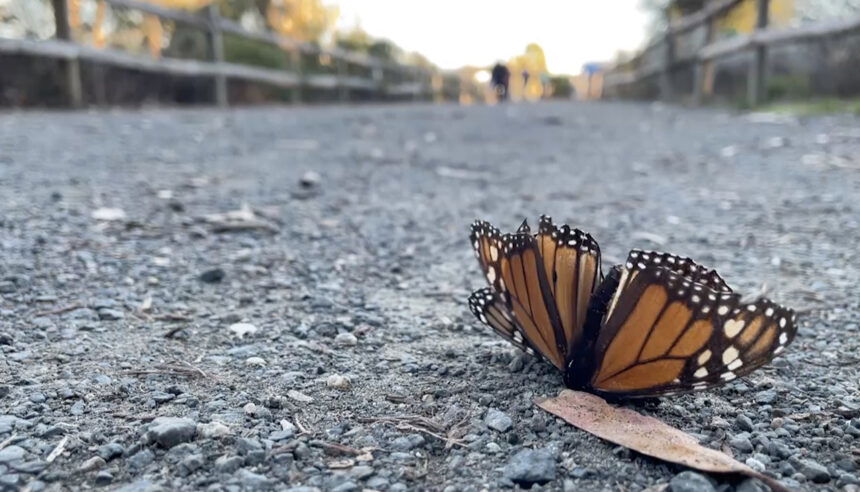Declining Monarch Butterfly population sparks calls conservation efforts

PISMO BEACH, Calif. - The number of Monarch Butterflies has dropped precipitously this year, prompting Congressman Salud Carbajal along with Congressman Jimmy Panetta and Senator Jeff Merkley to write the U.S. Fish and Wildlife Service to express their concern about the decision to not list the butterfly under the Endangered Species Act.
Grover Beach Resident Laura Ochoa agrees. She comes to the Monarch Butterfly Grove in Pismo Beach regularly and sees the lower numbers firsthand.
"So if we can identify, respond, and take care of a situation that can be taken care of," she said, "I think that's going to be a great effort."
Each winter, tens of thousands of butterflies migrate south, starting in November, to avoid colder weather.
"Usually they're in a big cluster in one or two trees that turn the entire tree bright orange," she said as she motioned to the now empty trees, "There are usually so many butterflies, it's really beautiful to see."
This year, only a few hundred Monarch Butterflies have been spotted at the Pismo Beach Monarch Grove.
"It's sad, you know, it was really a great place for families to bring their kids and to kind of teach them."
According to scientists, butterfly populations are at critical levels due to climate change, the destruction of milkweed habitats along migratory routes, and the increased use of pesticides.
If nothing is done to stop the rapid decline of the Monarch Butterfly population, it could become the 48th species to go extinct while waiting to join the endangered list.
